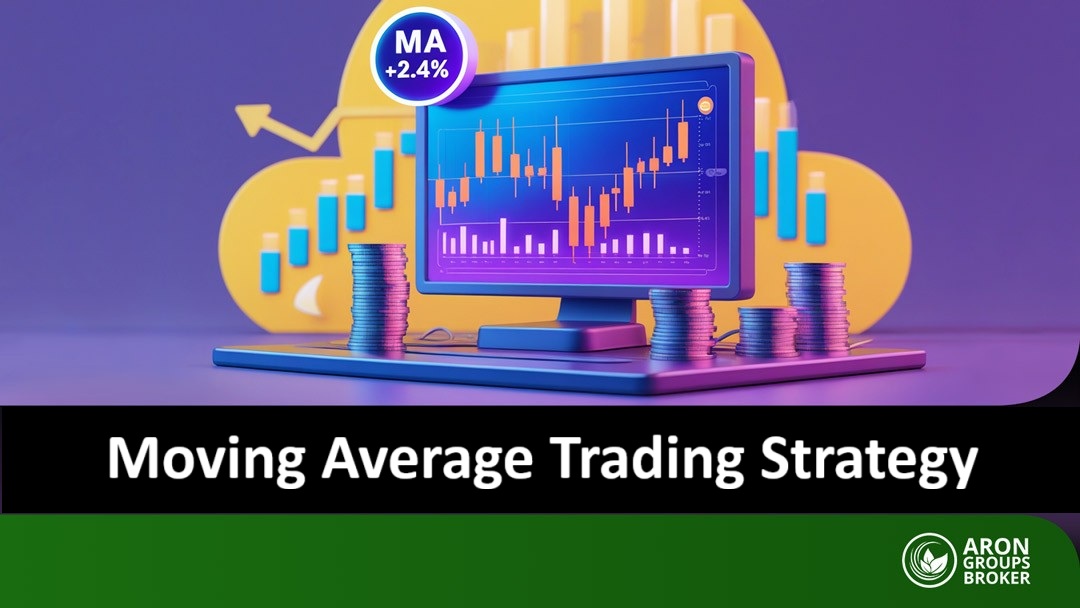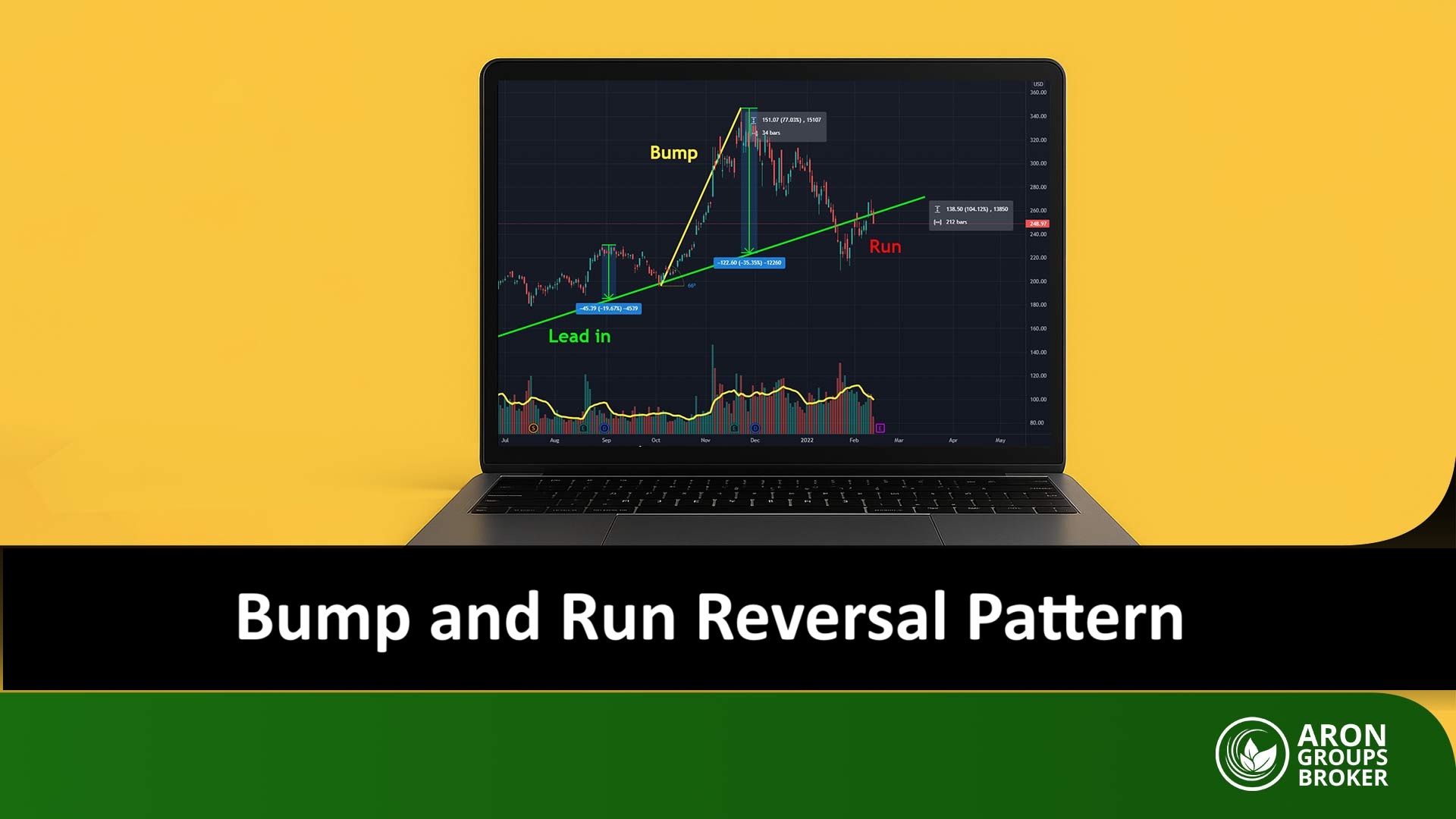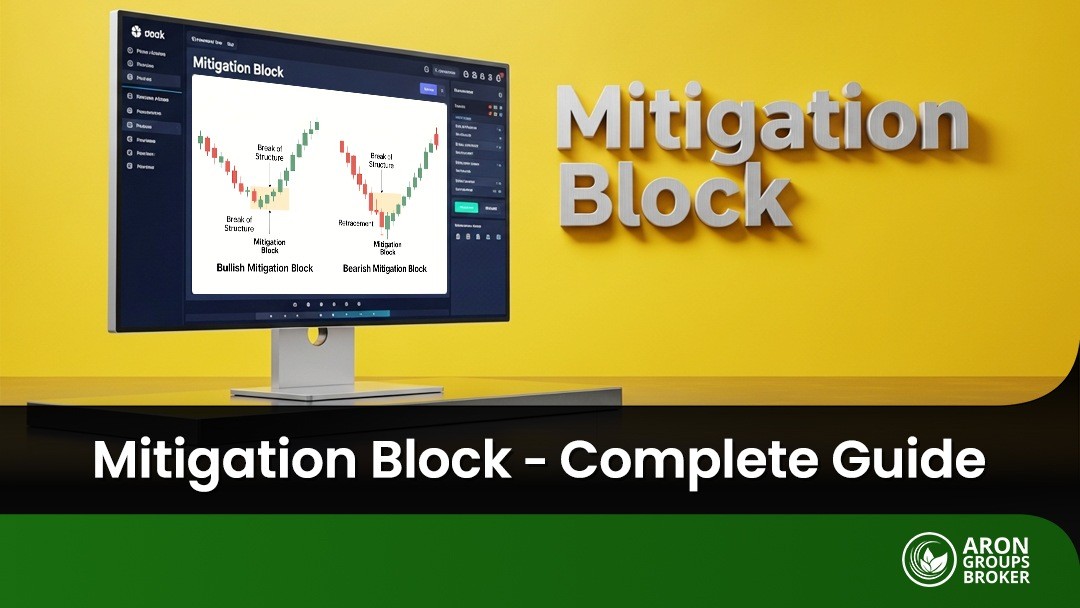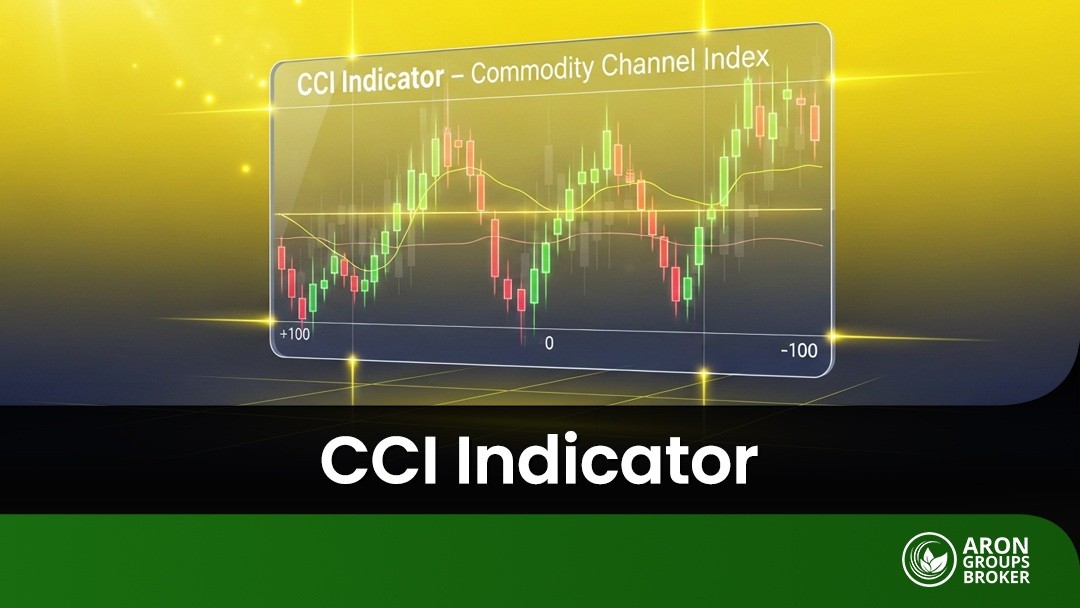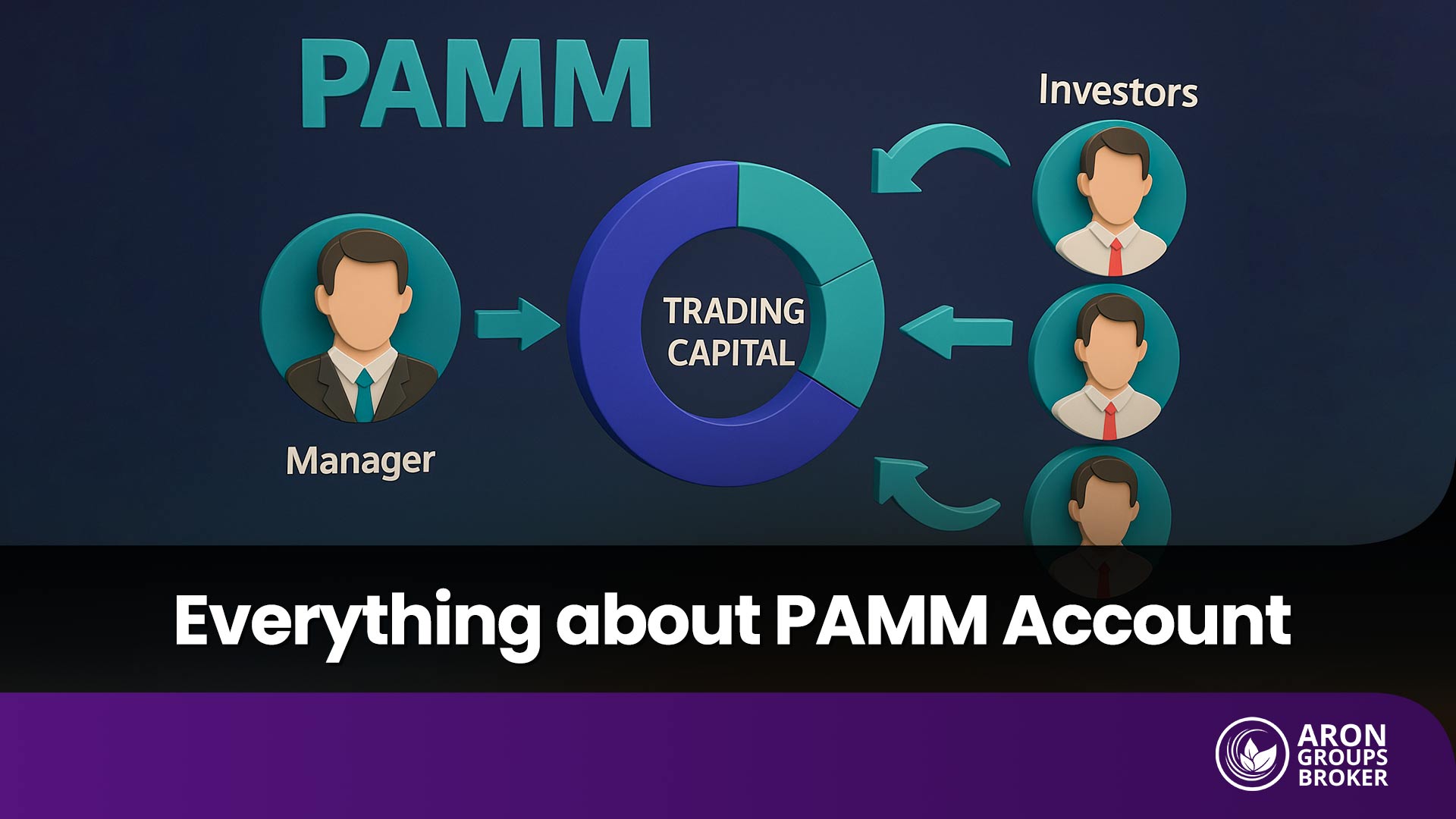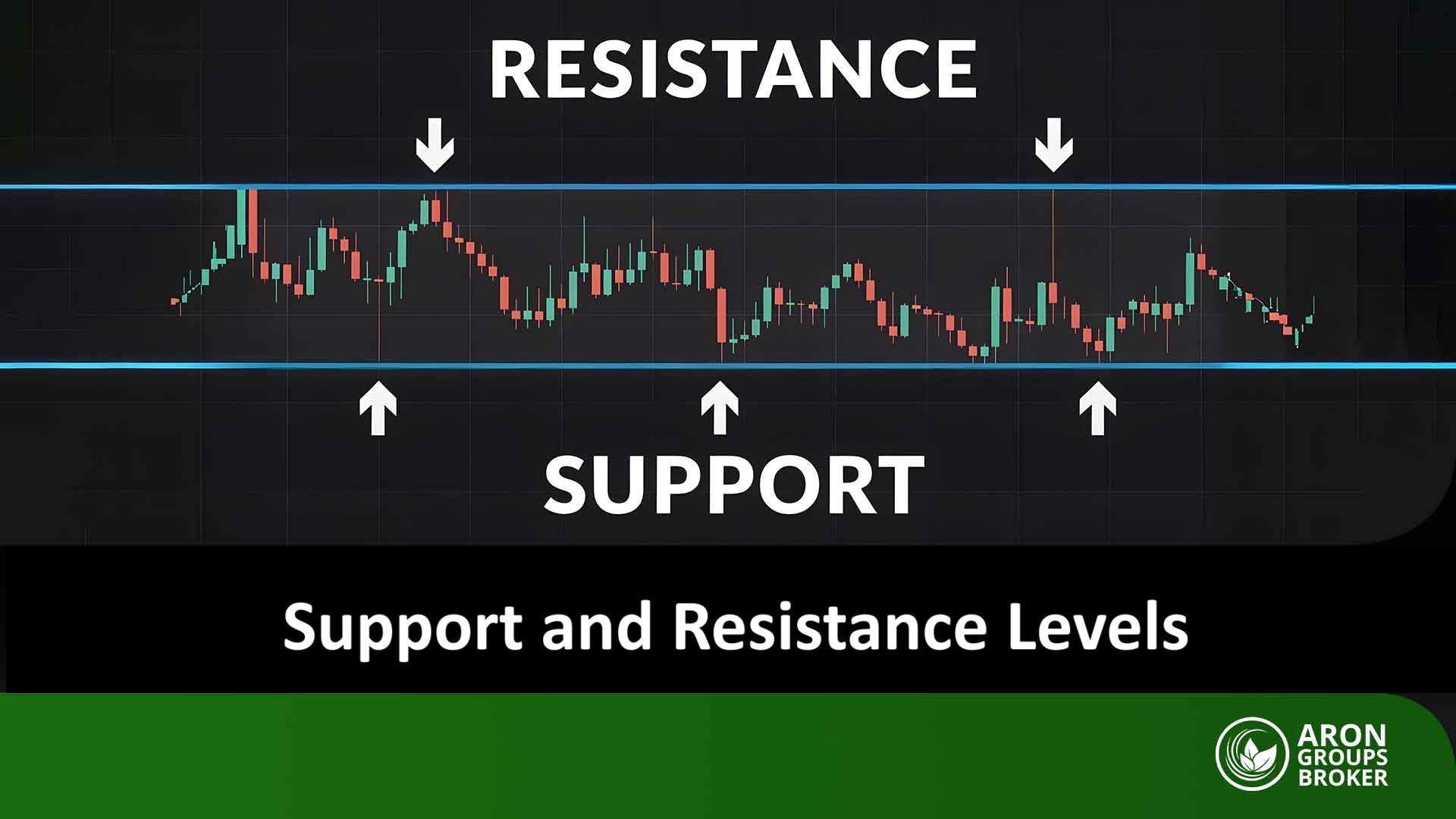The Forex market, characterized by its rapid volatility and high liquidity, provides an ideal environment for short-term strategies. Among these, scalping is a popular method where traders capitalize on very small price changes. However, executing numerous consecutive trades within seconds is challenging for the human mind. This is where Scalping Expert Advisors (EAs) come into play, automating the process for speed, precision, and efficiency.
In this practical guide, we will explore what a scalping EA is, how it functions, and which types tend to be more profitable.

- A profitable EA must possess features such as a high win rate, robust risk management, and adaptability to various market conditions.
- For the successful use of scalping EAs, correctly configuring parameters like trade volume (lot size), stop-loss, and take-profit is crucial.
- No EA guarantees profit, and the risk of capital loss is always present in the Forex market. Therefore, diligent risk management and continuous monitoring are essential.
What is a Scalping EA and How Does it Work?
A scalping EA is an automated program installed on trading platforms like MetaTrader 4 (MT4) and MetaTrader 5 (MT5) that executes trades without direct human intervention. Its primary function is to rapidly identify short-term trading opportunities and execute them precisely within very small timeframes (typically ranging from a few seconds to a few minutes).
In essence, a scalping EA uses intelligent, pre-defined algorithms to analyze market data in real-time. When the criteria for trade entry or exit are met, it instantly issues a buy or sell order. These bots use a combination of technical analysis tools such as the RSI, MACD, Moving Averages, and even candlestick patterns to make decisions.
For Example, when the RSI indicator enters the oversold region (below 30), the EA can automatically open a buy position and close it after securing a few pips of profit. Simultaneously, the stop-loss and take-profit levels are set automatically to ensure proper risk management.

In scalping, even a one-pip difference in the spread can change the outcome of a trade. Consequently, the quality of the internet connection, server speed, and the choice of a suitable broker play a critical role in the success of scalping EAs.
The Difference Between Scalping EAs and Other Trading Bots
While scalping EAs may appear similar to other trading bots, their operational approach is fundamentally different. Their primary goal is to capture small profits from rapid, short-term market movements, whereas other bots typically aim to catch larger trends over longer timeframes.
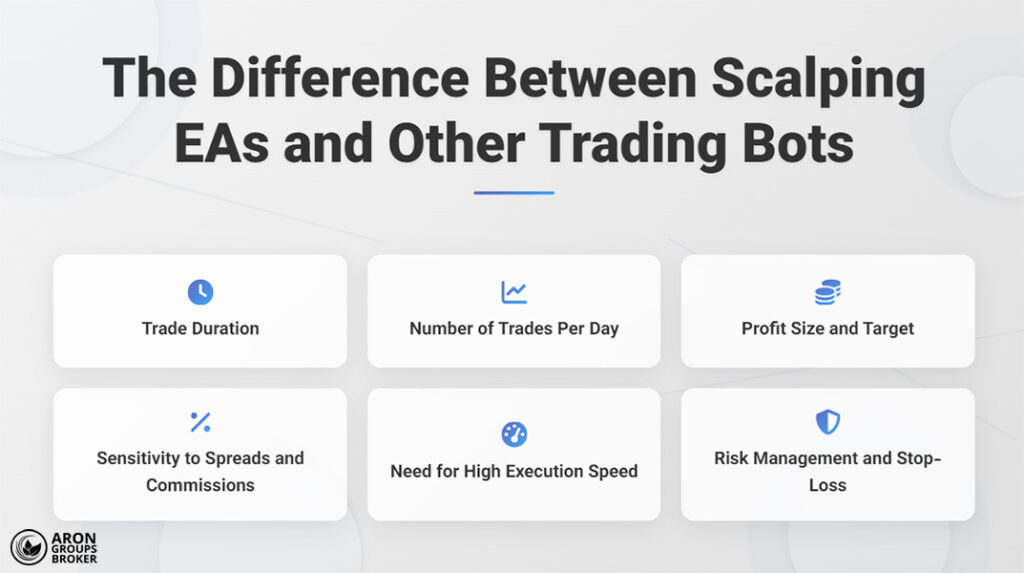
Trade Duration
With scalping bots, each trade remains open for only a few seconds to a few minutes. In contrast, trend-following or swing-trading EAs might stay in the market for hours or even days to profit from significant price changes.
Number of Trades Per Day
Scalpers thrive on frequency. These bots may execute dozens of trades in a single day, as they hunt every small, volatile opportunity. Conversely, long-term bots might only register a few trades per week or month.
Profit Size and Target
A scalping EA usually enters the market with a small profit target, typically 5 to 15 pips. However, it aims to achieve substantial overall profit through a high volume of trades. Other bots, by comparison, might set their take-profit for each trade at 50 or 100 pips.
Sensitivity to Spreads and Commissions
Because the profit margin on each scalping trade is minimal, even a slight increase in the broker’s spread or commission can wipe out the entire gain. Therefore, selecting a broker with low spreads and ECN or Raw Spread accounts is critical for this type of bot.
Need for High Execution Speed
In scalping, every millisecond matters. A delay in order execution can lead to slippage, where the trade is filled at a price different from what was expected. For this reason, professional scalpers often use Virtual Private Servers (VPS) located close to their broker’s servers to maximize connection speed.
Risk Management and Stop-Loss
Scalping bots typically use very tight stop losses to prevent significant losses. In contrast, trend-following bots may set wider stop-losses to avoid being closed out of a trade by normal market fluctuations.
| Feature | Scalping Expert Advisor | Trend Bots |
|---|---|---|
| Trade Duration | Very short (seconds to minutes) | Long-term (hours to days) |
| Number of Trades | Very high (dozens per day) | Low (a few per week/month) |
| Profit Target (Pips) | Small (e.g., 5-15 pips) | Large (e.g., 50-100+ pips) |
| Sensitivity to Spread | Extremely high (low spread is vital) | Low (spread has a minor impact) |
| Need for Speed | Critical (requires VPS, fast execution) | Normal (delays are not critical) |
| Risk Management | Very tight stop-loss | Wider stop-loss |

Although scalping can be highly profitable, it is not recommended for accounts with high spreads, slow execution, or high commissions. In such conditions, longer-term bots represent a safer alternative.
Characteristics of a Profitable Scalping EA
Below, we examine the most important characteristics of a successful scalping EA.
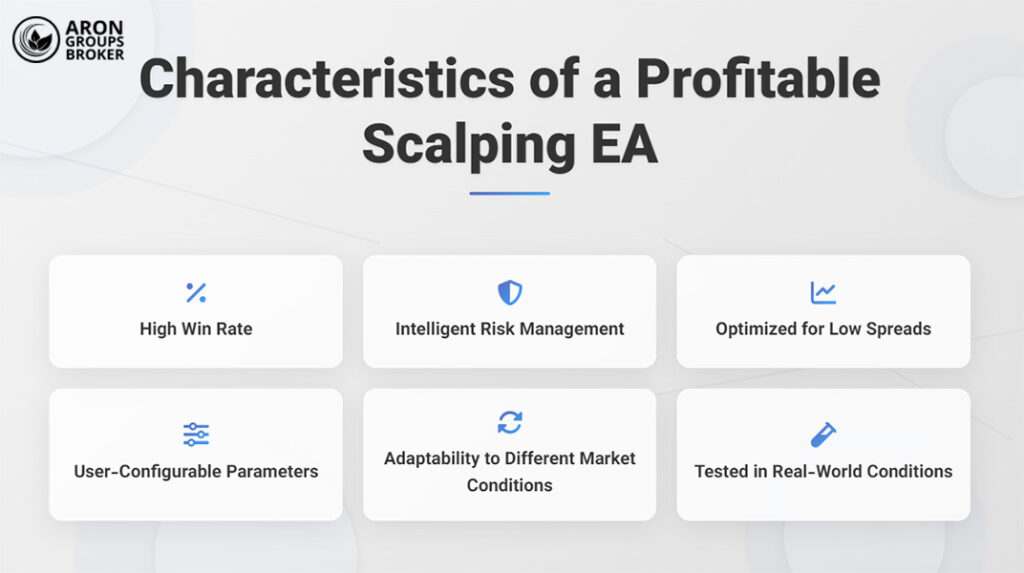
High Win Rate
In scalping, the profit from each trade is typically just a few pips. Therefore, the EA must have a high percentage of successful trades, usually above 70%. This high win rate ensures that small but consistent gains accumulate into a significant return over the long term.
Intelligent Risk Management
No EA, not even the best, can be correct 100% of the time. Consequently, a robust risk management system is vital. A profitable EA must be able to set stop-loss and take-profit levels automatically and, if market conditions change, quickly exit a losing trade.
Optimized for Low Spreads
Since scalping relies on small price movements, a high spread can eliminate all profits. A professional EA should be designed to only enter trades when the spread is low, or to refrain from trading if the spread suddenly widens.
User-Configurable Parameters
The market is not static, and every broker’s conditions are different. A profitable EA must offer customizable parameters, such as stop-loss, take-profit, trade volume (lot size), active trading hours, and even the choice of trading symbols. This flexibility allows the trader to align the settings with their personal trading strategy.
Adaptability to Different Market Conditions
The Forex market is not always in one state; it sometimes trends and at other times moves within a fixed range (consolidation). An EA designed for only one specific condition will suffer a performance drop when the market phase shifts. A profitable scalping EA must adapt its strategy by identifying market conditions or, at a minimum, avoid trading during high-risk periods.
Tested in Real-World Conditions
Many EAs show outstanding results in backtesting but fail to deliver similar performance in live trading. This is due to differences in spreads, execution latency, and slippage. Therefore, a truly profitable EA must have proven itself not only on historical data but also on live accounts with real-time data.
Types of Scalping EAs Based on Strategy
Below, we examine three common models of scalping EAs, each employing a specific method for identifying entry and exit points.
RSI-Based Scalping EAs
The RSI (Relative Strength Index) indicator is a classic tool in technical analysis that measures the strength of buyers and sellers in the market.
RSI-based scalping EAs operate on this logic:
- When the RSI value drops below 30 (the oversold region), the bot issues a buy signal.
- When the RSI value rises above 70 (the overbought region), it sends a sell signal.
Some advanced versions also use divergence between the price and the RSI to filter out false signals.
The primary advantage of these EAs is their simplicity and speed in identifying potential price reversals. However, in strong trending markets, the RSI can remain in the overbought or oversold region for extended periods, leading to premature signals.
MACD-Based Scalping EAs
The MACD (Moving Average Convergence Divergence) indicator is a popular tool for identifying trend changes and momentum. Scalping EAs based on the MACD use line crossovers to generate signals:
- When the MACD line crosses above the Signal line (a “bullish crossover”), a buy signal is issued.
- When the MACD line crosses below the Signal line (a “bearish crossover”), a sell signal is issued.
Some EAs use the MACD histogram as an additional filter to confirm the strength of the market’s momentum. These types of EAs perform very well in markets with a clear trend and are often combined with indicators like the EMA (Exponential Moving Average).
The main weakness of this strategy appears in range-bound or trendless markets, where frequent false signals can lead to a series of small, successive losses.
Price Action-Based Scalping EAs
Unlike the previous two models, Price Action-based scalping EAs do not rely on indicators. Instead, they make trading decisions based on the actual behavior of the price itself. Using intelligent algorithms, these EAs analyze candlestick changes, breakouts, and pullbacks to find precise entry and exit points.
The focus for these bots is on:
- Identifying reversal patterns such as Pin Bars, Engulfing patterns, or Morning/Evening Stars;
- Trading based on breakouts of support and resistance levels;
- Using pivot points to identify potential price reversal zones.
The advantage of this model is its flexibility and rapid reaction to real-time market volatility. Unlike indicators, which rely on past data (lagging), price action directly analyzes current price movements. Of course, designing and programming such a bot is more complex, as it requires high precision in pattern recognition and filtering out market noise.
Advantages and Disadvantages of Using a Scalping EA
Using scalping EAs in Forex trading can be an intelligent and efficient solution for many traders. However, like any financial tool, they have their own specific strengths and weaknesses.
Advantages of Scalping EAs
Some of the benefits of using a scalping EA include:
- Removal of Emotions from Trading
Unlike humans, EAs do not make emotional decisions. They operate strictly according to their defined algorithms, leading to more disciplined trading free from fear or greed. - 24-Hour Trading
An EA can work tirelessly during all active market hours, identifying profitable opportunities at any time. - High-Speed Execution
Bots can open and close trades in milliseconds—a speed that is critical in scalping and impossible for a human to achieve. - Backtesting Capability
You can test the EA’s performance on historical market data to identify its strengths and weaknesses before live deployment. - Simultaneous Monitoring of Multiple Symbols
An EA is capable of monitoring several trading symbols at the same time, allowing it to capture more trading opportunities.
Disadvantages of Scalping EAs
The drawbacks of using a scalping EA include:
- Dependency on Market Conditions
EAs only perform well in conditions that match their algorithm. They may make errors in unpredictable or highly volatile markets. - Need for Human Oversight
Although they are automated, they must be monitored regularly to ensure they do not malfunction during severe market volatility or sudden spread increases. - Technical Risks
An internet outage, server failure, or software bug can disrupt the bot’s operation and lead to losses. - Over-Optimization
Some bots are “curve-fitted” or over-optimized purely for historical data and fail to perform adequately in real-time market conditions. - Cost of Use and Maintenance
Professional EAs are often costly, and they typically require a dedicated server (VPS) for stable execution, which incurs a separate fee.
The Best Profitable Scalping EAs in 2025
Certain Expert Advisors have garnered significant attention in 2025 due to their stable results, high precision, and flexibility. Below, we review a few of the most popular and successful examples.
RenkoGrail Scalping EA
This EA is designed based on Renko Charts. A Renko chart is a chart type that displays price movements (volatility) without regard to time, allowing it to effectively filter out market noise.

The RenkoGrail Scalping EA uses these charts to identify precise entry and exit points and performs with high accuracy in short-term trades on major currency pairs like EUR/USD and USD/JPY.
According to user feedback on ForexFactory, this EA demonstrates high precision in detecting market direction and is a reliable option for traders seeking fast trades with controlled risk.
FXCharger EA
FXCharger is one of the most popular EAs in 2025 that utilizes the Martingale strategy. This means it increases the trade volume after a loss to “average down” the price, aiming to return to profit when the market reverses.

However, the key feature of this EA is its intelligent risk management, which prevents catastrophic losses. This bot typically performs excellently on the EUR/USD and GBP/USD pairs and is well-suited for scalping on 5-minute to 15-minute timeframes.
Flex EA
Flex EA is one of the most versatile EAs, capable of supporting multiple trading strategies, including scalping, hedging, and medium-term trading.
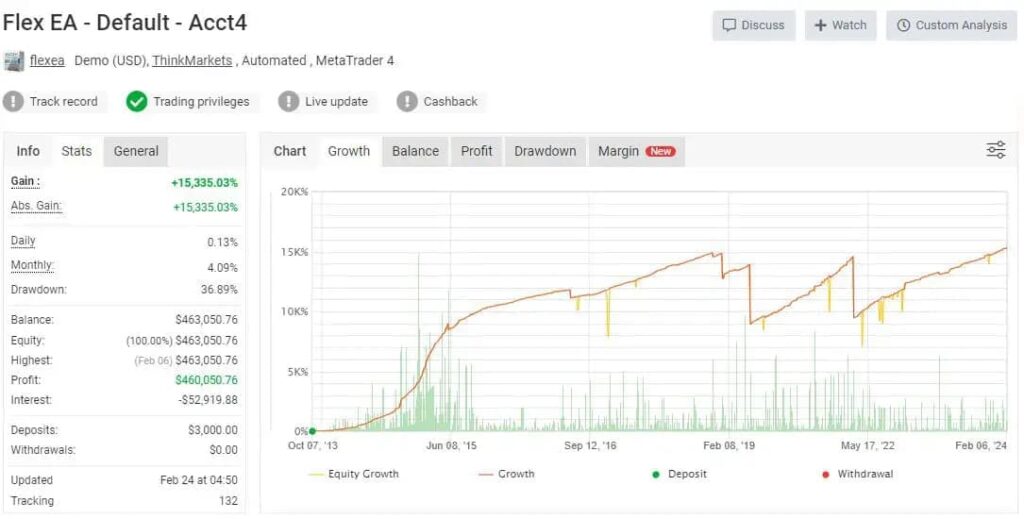
With its internal artificial intelligence, this EA can identify market conditions and automatically select the best strategy.
The standout feature of Flex EA is its high flexibility in parameter configuration. Users can modify entry methods, take-profit, stop-loss, and even the bot’s operating hours. This makes it a suitable option for both beginners and professional traders.
Night Hawk EA
As its name suggests, this EA is designed specifically for night trading (or “overnight trading”), a time when the market is calmer and trading volume is lower.
Night Hawk EA uses a range breakout strategy and typically only enters trades during these low-volatility hours to stay safe from sudden, unexpected price movements.
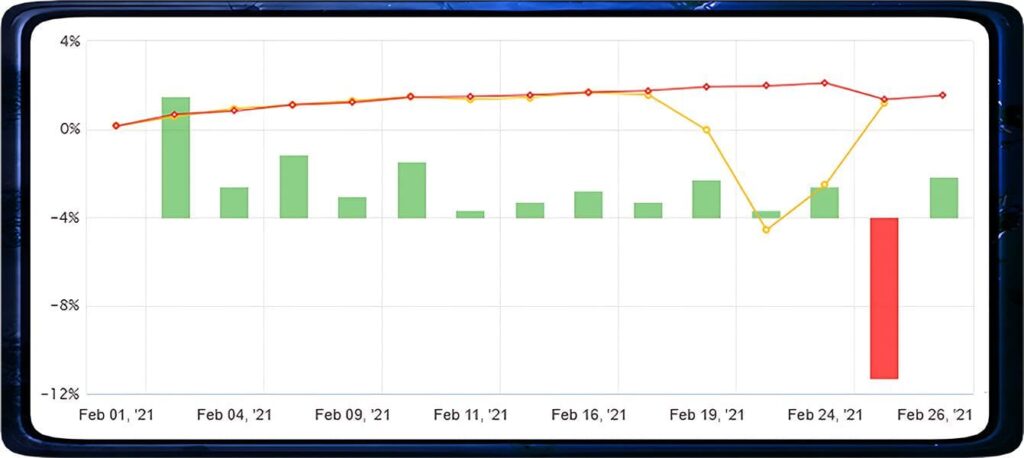
Due to its conservative approach, this bot is a suitable option for low-risk traders and achieves its best returns on low-spread accounts.
Blessing EA
Blessing EA is one of the few free, open-source EAs that possess significant power despite its simplicity. This EA uses a combination of moving averages, a time filter, and intelligent risk management to execute trades.

Its unique feature is the ability to edit the code and perform manual optimization. Therefore, experienced traders can build their own customized versions.
Blessing EA is an excellent educational tool for those looking to learn the logic behind bot operations and build their own personal strategies.
Optimal Settings for a Scalping EA
No matter how professional or advanced a scalping EA is, it cannot deliver optimal returns without precise and customized settings.
Trade Volume (Lot Size)
The trade volume determines how much capital you commit to each position. In scalping, due to the high frequency of trades and the small distance between entry and exit, managing volume is critical. The general rule is to not risk more than 1% to 2% of your total account on any single trade. For example, if you have a $1,000 account, your maximum allowable loss per trade should be between $10 and $20. This prevents severe drawdowns on your capital.
Stop-Loss
A stop-loss defines a point at which the bot will automatically exit a trade if the market moves against it. In scalping, because trades are short-term, the stop-loss is typically set very tight, often between 3 to 10 pips. A tight stop-loss reduces risk, but if set too tight, it can lead to premature exits. Smart adjustment based on the specific instrument’s volatility is essential.
Take-Profit
In scalping, the goal is to secure small but frequent profits. Therefore, the take-profit is usually set in the same range as the stop-loss, or slightly larger. The risk-to-reward ratio (R:R) is often 1:1 or 1:1.5. For instance, if the stop-loss is 5 pips, the take-profit can be set between 5 and 7 pips. This ratio helps maintain a balance between profitability and risk.
Operating Hours
Not all hours of the day are suitable for scalping. The EA should only be active when there is sufficient market liquidity and volatility for orders to be executed quickly. The best time for major pairs like EUR/USD or GBP/USD is often during the London and New York market overlap (approximately 17:00 to 21:00 Tehran time / 13:30 to 17:30 GMT). During this window, spreads are tighter, and price movements are clearer.
News Filter Module
Major economic news, such as interest rate announcements or employment data, can move the price by dozens of pips in seconds. EAs equipped with a news filter will automatically stop trading before and after a major news release. This feature prevents sudden losses and significant slippage.
Maximum Concurrent Trades
If an EA is allowed to open too many trades simultaneously, the overall risk to the account increases significantly. By setting a limit, for example, to 2 or 3 concurrent trades, you can prevent excessive pressure on your capital and sudden drops in equity. This setting is especially crucial for EAs that trade on multiple symbols.
Auto-Close Module (Equity Stop / Daily Target)
This option acts as an “emergency brake” for your account. In this setting, you define a specific limit for the total profit or loss on the account. For example, if the total daily profit reaches 5% or the loss approaches 3%, the EA will automatically close all open positions. This feature prevents catastrophic losses during unexpected market volatility.
Conclusion
Scalping Expert Advisors are practical tools for Forex traders seeking quick and consistent profits. These bots use strategies based on RSI, MACD, or Price Action to identify short-term opportunities and trade them automatically.
However, no EA guarantees profit. Success in scalping depends on thorough testing, optimal settings, diligent risk management, and continuous monitoring. It is always best to verify an EA’s performance on a demo account before live deployment and to begin real trading with a small volume.























